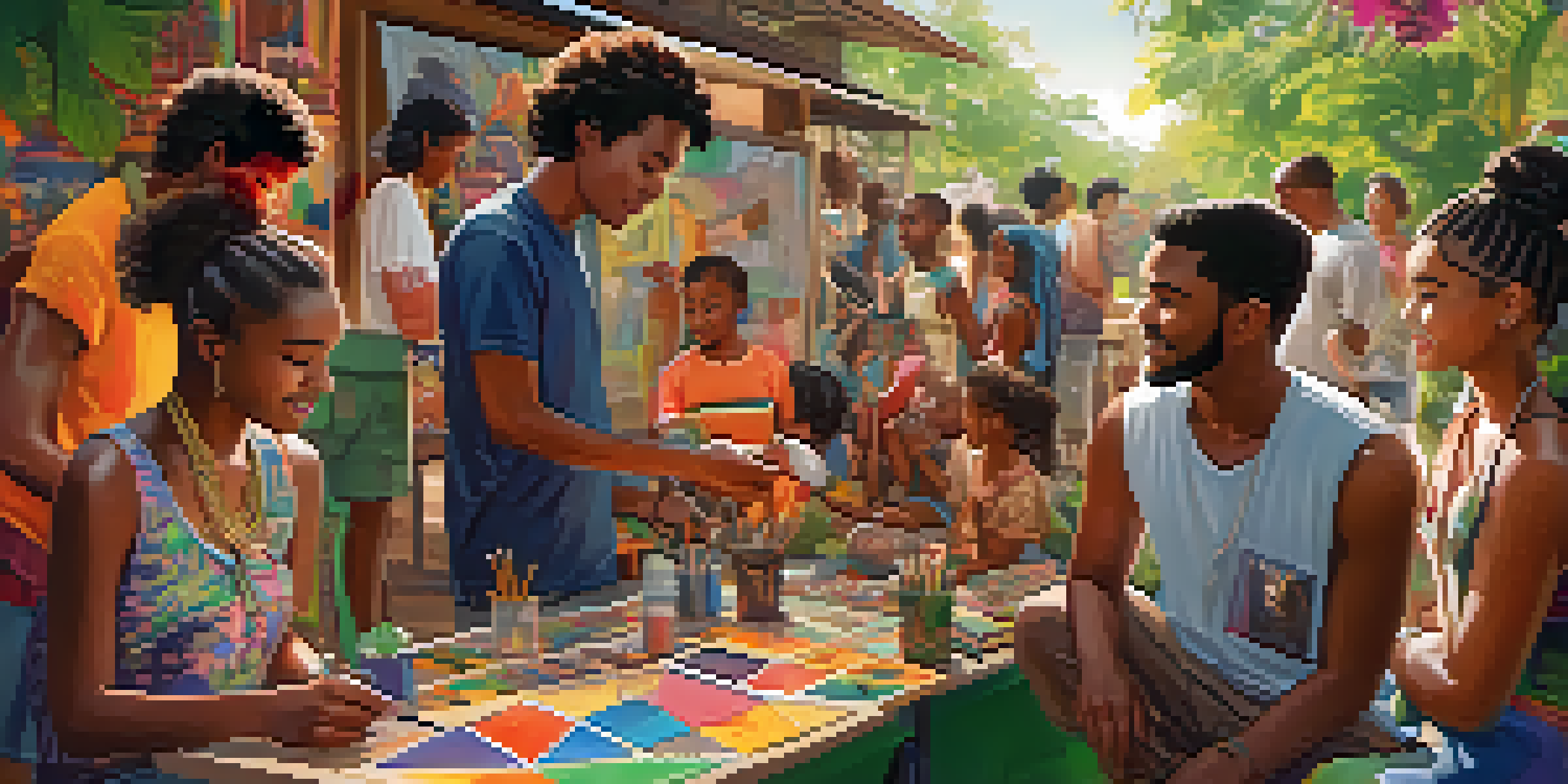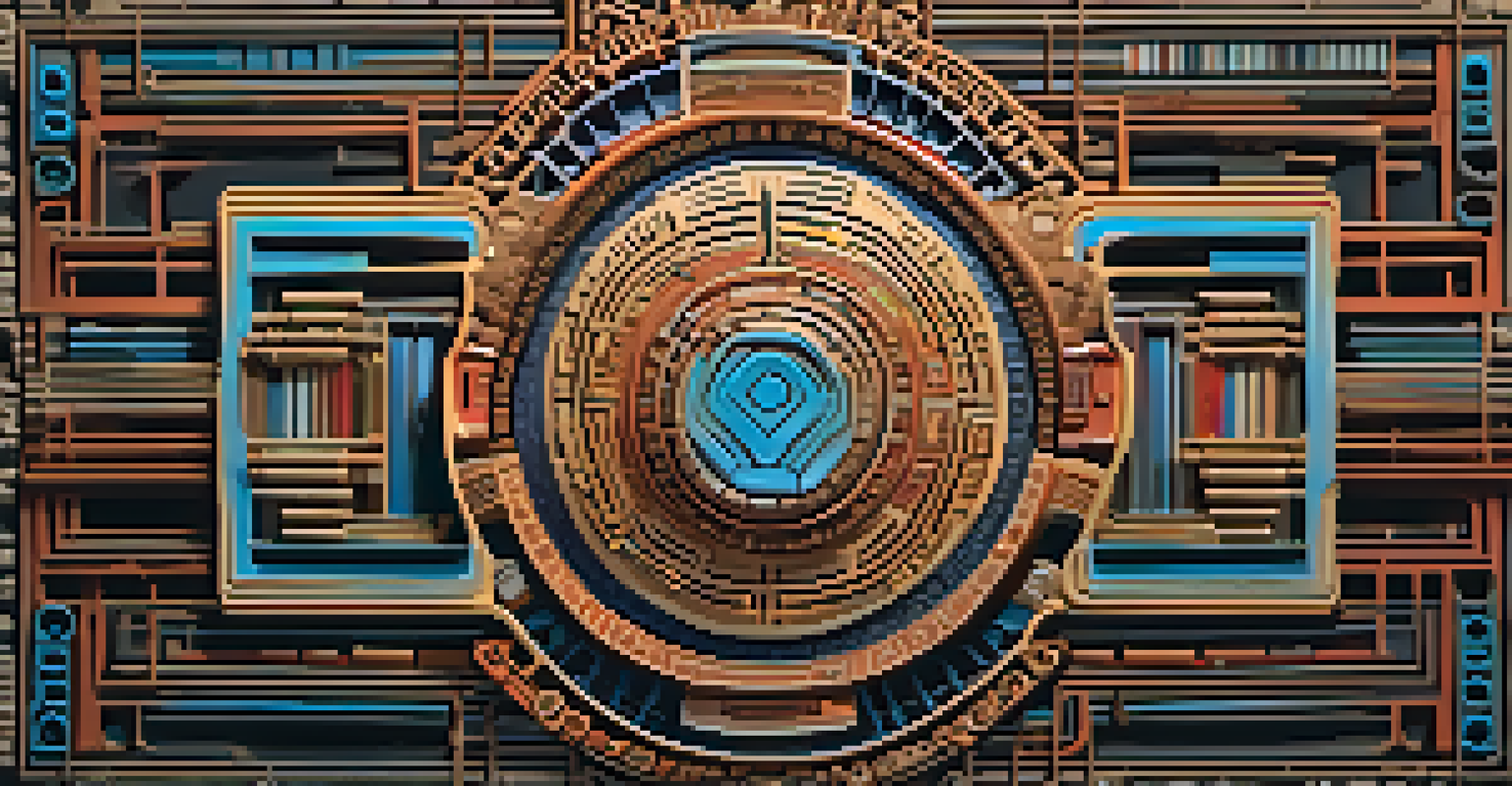Exploring Cultural Appropriation vs. Appreciation through NFTs

Understanding Cultural Appropriation and Appreciation
Cultural appropriation occurs when elements of one culture are taken by another, often without understanding or respect. This can lead to the commodification of cultural symbols, making them lose their original meaning. On the other hand, cultural appreciation involves understanding, valuing, and respecting another culture, often through learning and collaboration. It's crucial to recognize the fine line between these two concepts, especially in creative spaces like NFTs.
Cultural appreciation is about understanding and valuing the nuances of a culture, while appropriation often strips it of its significance.
For example, wearing traditional attire as a costume can be seen as appropriation, while participating in cultural events with respect and acknowledgment demonstrates appreciation. The rise of digital art and NFTs has amplified these discussions, creating a platform for both appropriation and appreciation to coexist. Artists and collectors must navigate these waters carefully to foster respect and understanding.
Ultimately, distinguishing between appropriation and appreciation is essential to ensure that cultural expressions are honored rather than exploited. Engaging with cultures in a meaningful way can enrich our artistic landscapes, especially in the innovative world of NFTs.
The Rise of NFTs in Cultural Representation
NFTs, or non-fungible tokens, have transformed the art world, allowing creators to monetize their work in new ways. This digital format has opened doors for artists from diverse backgrounds to showcase their cultural heritage. However, this rise raises questions about who benefits from the sale of culturally significant works, especially when the artists belong to marginalized communities.

For instance, an NFT depicting Indigenous art may generate significant profits, but if the artist isn’t involved or compensated, it can lead to feelings of exploitation. This scenario highlights the importance of transparency and ethical practices within the NFT space. Artists must ensure that their cultural narratives are represented authentically and that they have a say in how their work is used.
Cultural Appropriation vs. Appreciation
Understanding the difference between cultural appropriation and appreciation is essential for fostering respect and meaningful engagement in creative spaces like NFTs.
As the NFT market continues to evolve, it's vital for collectors and platforms to prioritize equitable practices that support cultural representation. This way, the digital art space can become a thriving environment for appreciation rather than appropriation.
Case Studies: NFTs and Cultural Sensitivity
Examining specific case studies can shed light on the nuances of cultural appropriation and appreciation in NFTs. One notable example involves the backlash against an NFT collection that misappropriated African art styles without crediting the original artists. This incident sparked a broader conversation about ethical responsibilities in the digital art world.
The power of art lies in its ability to tell stories that honor and respect the cultures from which they originate.
Conversely, there are instances where artists have created NFTs that celebrate their cultural heritage, receiving widespread acclaim. For instance, a Native American artist released a series of NFTs that honor traditional storytelling, receiving support from both their community and collectors. These examples illustrate how cultural sensitivity can lead to positive outcomes in the NFT space.
By analyzing these case studies, we can identify best practices for creating and sharing culturally significant NFTs. They serve as reminders that respect and acknowledgment are crucial in fostering a community that values appreciation over appropriation.
The Role of Artists in Cultural Conversations
Artists play a pivotal role in shaping cultural conversations, especially in the realm of NFTs. As creators, they have the power to tell their stories and represent their cultures authentically. This responsibility also extends to how they engage with other cultures, ensuring that they approach their work with respect and an understanding of cultural significance.
For example, an artist collaborating with a community to create NFTs can foster appreciation and mutual respect. This approach not only enriches the artwork but also helps educate audiences about the cultural context behind it. The more artists engage with their audience on these topics, the more awareness is raised about the importance of cultural sensitivity.
Importance of Ethical Practices in NFTs
Artists and collectors must prioritize transparency and ethical practices to ensure that culturally significant works benefit the original creators and communities.
Through their work, artists can challenge stereotypes and promote understanding, making their role in these conversations even more critical. The NFT space offers a unique platform for artists to amplify their voices and advocate for responsible cultural representation.
Navigating Legal Considerations in NFTs
When discussing cultural appropriation and appreciation, it's essential to consider the legal landscape surrounding NFTs. Copyright laws protect original works, but they can be complex when it comes to cultural expressions. Artists must navigate these laws carefully to avoid infringing on the rights of the communities and cultures they are representing.
For example, using traditional designs or symbols in NFT art without permission can lead to legal disputes and further perpetuate cultural appropriation. It’s crucial for artists to seek guidance on intellectual property rights, especially when their work intersects with culturally significant elements. Understanding these legal frameworks can empower artists to create responsibly.
As the NFT market matures, legal considerations will become increasingly important in discussions around cultural representation. By prioritizing legal awareness, artists can better protect their work and ensure they engage with cultures respectfully.
Community Engagement and Collaboration
Building meaningful relationships with communities is vital for artists working with cultural themes in NFTs. Collaborative efforts can lead to richer, more authentic representations that honor the cultures being depicted. Engaging with community members not only fosters appreciation but also creates opportunities for dialogue about cultural significance.
For instance, artists can host workshops or discussions to learn directly from community members about their cultural practices and stories. This engagement allows for a deeper understanding and respect that can be reflected in their work. Moreover, it encourages a sense of ownership and pride within the community regarding the representation of their culture.
Collaboration Enhances Cultural Respect
Engaging with communities through collaboration can lead to richer representations of culture in NFTs, promoting appreciation over appropriation.
Collaboration can also extend to platforms that specialize in NFTs, ensuring that cultural voices are prioritized in the digital space. By working together, artists and communities can create a more inclusive environment that values appreciation over appropriation.
The Future of Cultural Representation in NFTs
As the NFT space continues to grow, the future of cultural representation hangs in the balance. With increased awareness of cultural appropriation and appreciation, artists and collectors must be vigilant in their practices. The ongoing dialogue about these issues can lead to more responsible and ethical approaches in the digital art world.
Emerging technologies and platforms may provide innovative ways for artists to share their work while maintaining cultural integrity. For example, decentralized platforms could empower artists to retain control over their cultural narratives and ensure fair compensation. This shift could reshape how cultural art is created and consumed in the NFT market.

Ultimately, fostering an environment of respect and collaboration will be crucial for the future of cultural representation in NFTs. As conversations evolve, so too should our approaches to creating and appreciating art from diverse cultural backgrounds.